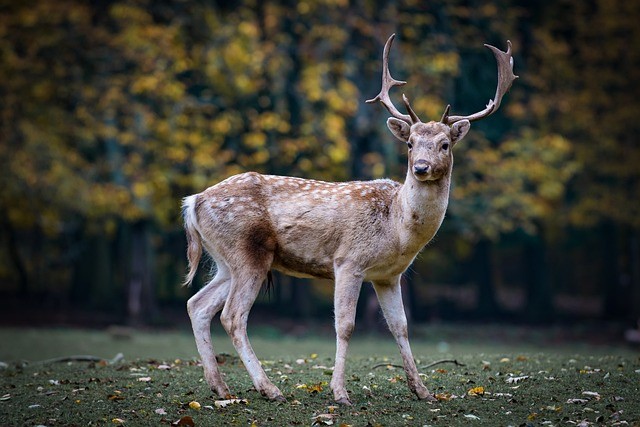In a recently shared Instagram video, a white-tailed deer calmly consumes a dead snake, resembling the act of slurping up spaghetti. Filmed by Trey Reinhardt from Texas, the somewhat unsettling scene raised concerns on social media regarding the deer's dietary habits.

Deer Are Sometimes Omnivores
Deer, as primarily herbivorous animals, have a digestive system designed for extracting nutrients from plant cellulose. However, as per Live Science, instances of carnivorous behavior among deer have been observed throughout history.
The recent viral video showcasing a white-tailed deer casually consuming a dead snake like spaghetti is just one example that has sparked alarm and discussion on social media.
Before this footage emerged, there were reports of deer nibbling on live fish, swallowing them whole. Additionally, there have been incidents captured on film where seemingly semi-tame deer readily accepted and devoured chunks of steak from outdoor diners.
Field cameras have also recorded deer appearing to nibble on dead rabbits and investigating discarded animal remains left behind by hunters in the wild.
These instances of carnivorous behavior are not isolated occurrences. In 1988, researchers documented red deer in Scotland beheading seabird chicks and feasting on their limbs and wings.
Another incident in 1976 involved white-tailed deer being accused of mutilating avian corpses found in nearby mist nets used by bird researchers. This opportunistic mist-net hunting was later confirmed in a 2000 study published in the American Midland Naturalist.
In a chilling discovery, a 2017 study revealed that deer were among the scavengers found at an experimental body farm where decomposing human corpses were studied. Photographs from the study depict deer consuming the remains of a human rib. There have also been observations of Indian spotted deer crunching on the bones of wild animals. These examples illustrate that, while these are uncommon, carnivorous behavior does occur among deer.
Why the Dietary Detour?
The carnivorous behavior observed in deer and other herbivores may be an adaptive survival strategy, according to Live Science's report. While lacking the physical capabilities to actively hunt and tear apart prey, deer can take advantage of prone or dead animals as an easily accessible and nutrient-rich food source compared to the plant material they typically consume. This allows them to obtain essential minerals, proteins, and fats more efficiently.
National Geographic said that the deer may exhibit carnivorous behavior due to their deficiency in essential minerals such as phosphorus, salt, and calcium, particularly during the winter season when plant resources are limited. The ability to diversify their diet could also serve as a buffer against resource uncertainties and changes in their natural habitats.
Interestingly, similar behavior has been observed in other species as well. African antelopes known as duikers have been observed consuming lizards and occasionally scavenging carrion. Sheep have been found decapitating and dismembering bird chicks alongside the Scottish red deer. Giraffes in Africa are also known to consume bones.
These instances blur the boundaries we typically associate with herbivores and remind us of the adaptability and flexibility of animals in their quest for survival.
RELATED ARTICLE: Deer From Tennessee Has Hairy Eyeballs Due to Bizarre Condition, Can Humans Get Dermoids Too?
Check out more news and information on Animals in Science Times.
© 2026 ScienceTimes.com All rights reserved. Do not reproduce without permission. The window to the world of Science Times.










